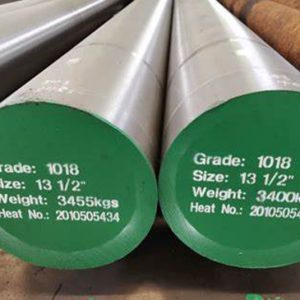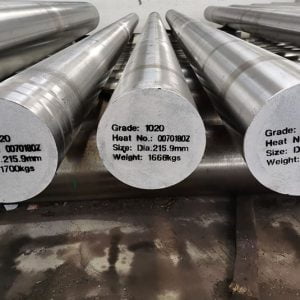Introduction
1018 steel is a popular choice in various industries due to its excellent balance of properties and ease of machining. Understanding the composition of 1018 steel is crucial for engineers, manufacturers, and anyone involved in material selection for engineering applications. In this comprehensive guide, we will explore the 1018 steel composition, its properties, applications, and benefits. We will also answer frequently asked questions to provide a complete understanding of this versatile material.
Understanding 1018 Steel Composition

What is 1018 Steel?
1018 steel is a low-carbon steel that is widely used in manufacturing and industrial applications. It is known for its good weldability, machinability, and strength. The designation “1018” refers to its specific composition and properties, which make it suitable for a wide range of applications.
Key Elements in 1018 Steel Composition
The composition of 1018 steel includes several key elements that contribute to its properties. Here is a breakdown of the primary components:
- Carbon (C): 0.15% – 0.20%
- Manganese (Mn): 0.60% – 0.90%
- Phosphorus (P): 0.040% (max)
- Sulfur (S): 0.050% (max)
- Iron (Fe): Balance
These elements are carefully controlled to ensure that 1018 steel exhibits the desired characteristics for its intended applications.
Table: Composition of 1018 Steel
| Element | Percentage Range |
|---|---|
| Carbon (C) | 0.15% – 0.20% |
| Manganese (Mn) | 0.60% – 0.90% |
| Phosphorus (P) | 0.040% (max) |
| Sulfur (S) | 0.050% (max) |
| Iron (Fe) | Balance |
Impact of Each Element on 1018 Steel Composition
Carbon (C)
Carbon is a critical element in 1018 steel composition. It provides hardness and strength to the steel. The relatively low carbon content in 1018 steel makes it easy to weld and machine while maintaining adequate strength.
Manganese (Mn)
Manganese improves the strength and hardness of 1018 steel. It also enhances its toughness and resistance to wear. The presence of manganese helps in the deoxidation process during steel production, contributing to the overall quality of the steel.
Phosphorus (P)
Phosphorus is typically kept at low levels in 1018 steel to avoid brittleness. However, small amounts can improve the steel’s strength and machinability.
Sulfur (S)
Sulfur is also kept at low levels to maintain the steel’s ductility and toughness. It helps improve machinability, but excessive sulfur can lead to brittleness.
Iron (Fe)
Iron is the primary component of 1018 steel, making up the balance of the composition. It provides the basic structure and properties of the steel.
Properties of 1018 Steel
Mechanical Properties
The composition of 1018 steel gives it a set of mechanical properties that make it suitable for various applications. These properties include:
- Tensile Strength: 440 MPa
- Yield Strength: 370 MPa
- Elongation: 15% (in 50 mm)
- Brinell Hardness: 126 HB
These properties make 1018 steel a versatile material that can be used in applications requiring good strength, ductility, and toughness.
Physical Properties
1018 steel also exhibits a range of physical properties, including:
- Density: 7.87 g/cm³
- Melting Point: 1480°C
- Thermal Conductivity: 51.9 W/m·K
- Electrical Resistivity: 0.0000157 ohm·cm
These physical properties contribute to the material’s overall performance in various environments and applications.
Machinability and Weldability
One of the key advantages of 1018 steel is its excellent machinability and weldability. The low carbon content and balanced composition allow for easy cutting, shaping, and joining using standard techniques. This makes 1018 steel a preferred choice for manufacturing parts and components that require precision machining and reliable welds.
Applications of 1018 Steel

Automotive Industry
In the automotive industry, 1018 steel is used for various components such as shafts, pins, and fasteners. Its good machinability and strength make it suitable for parts that require precise dimensions and reliable performance.
Construction and Structural Engineering
1018 steel is widely used in construction and structural engineering for applications such as beams, columns, and reinforcement bars. Its balanced properties ensure that it can withstand loads and stresses commonly encountered in these environments.
Manufacturing and Tooling
In manufacturing and tooling, 1018 steel is used for making jigs, fixtures, and molds. Its machinability and toughness make it ideal for producing tools that require intricate shapes and high durability.
Machinery and Equipment
1018 steel is also used in the production of various machinery and equipment components, including gears, bushings, and couplings. Its strength and wear resistance ensure long-lasting performance in demanding applications.
Home Appliances and Consumer Goods
The versatility of 1018 steel extends to home appliances and consumer goods. It is used in the manufacture of items such as brackets, hinges, and handles, where good mechanical properties and a smooth finish are required.
Conclusion: 1018 Steel Composition
1018 steel composition provides a unique balance of properties that make it suitable for a wide range of applications. Understanding its composition and the impact of each element helps in selecting the right material for specific engineering and manufacturing needs. The versatility, machinability, and strength of 1018 steel ensure its continued use in various industries.
FAQ
What is the primary composition of 1018 steel?
The primary composition of 1018 steel includes 0.15%-0.20% carbon, 0.60%-0.90% manganese, with phosphorus and sulfur kept at low levels, and the balance being iron.
How does the carbon content in 1018 steel affect its properties?
The low carbon content in 1018 steel provides a good balance of hardness and strength while maintaining excellent weldability and machinability. This makes it suitable for various applications requiring precision and reliability.
Why is manganese important in 1018 steel composition?
Manganese improves the strength, hardness, and toughness of 1018 steel. It also aids in the deoxidation process during steel production, contributing to the overall quality of the material.
Can 1018 steel be easily welded?
Yes, 1018 steel can be easily welded using standard welding techniques. Its low carbon content ensures good weldability, making it suitable for fabricating parts and structures.
Can 1018 steel composition be modified through heat treatment?
While 1018 steel composition can undergo heat treatment, its low carbon content limits the extent of hardening that can be achieved. Heat treatment may be used to enhance specific properties, but it is generally used in applications that do not require extensive hardening.
What role does phosphorus play in 1018 steel composition?
In 1018 steel composition, phosphorus is kept at low levels to avoid brittleness. However, small amounts can improve the steel’s strength and machinability, contributing to its overall performance.
How does sulfur in 1018 steel composition affect its properties?
Sulfur in 1018 steel composition is kept at low levels to maintain ductility and toughness. While sulfur improves machinability, excessive amounts can lead to brittleness, so it is carefully controlled.
Why is iron the balance element in 1018 steel composition?
Iron is the primary element in 1018 steel composition, providing the basic structure and properties of the steel. It serves as the base metal, to which other elements are added to achieve desired characteristics.
How does the 1018 steel composition compare to other low-carbon steels?
1018 steel composition offers a good balance of properties, including strength, machinability, and weldability, compared to other low-carbon steels. Its specific composition makes it ideal for applications requiring precise machining and reliable performance.
What are the advantages of using 1018 steel composition in manufacturing?
The advantages of using 1018 steel composition in manufacturing include its excellent machinability, weldability, and balanced mechanical properties. This makes it a preferred choice for producing components that require precision, strength, and durability.





